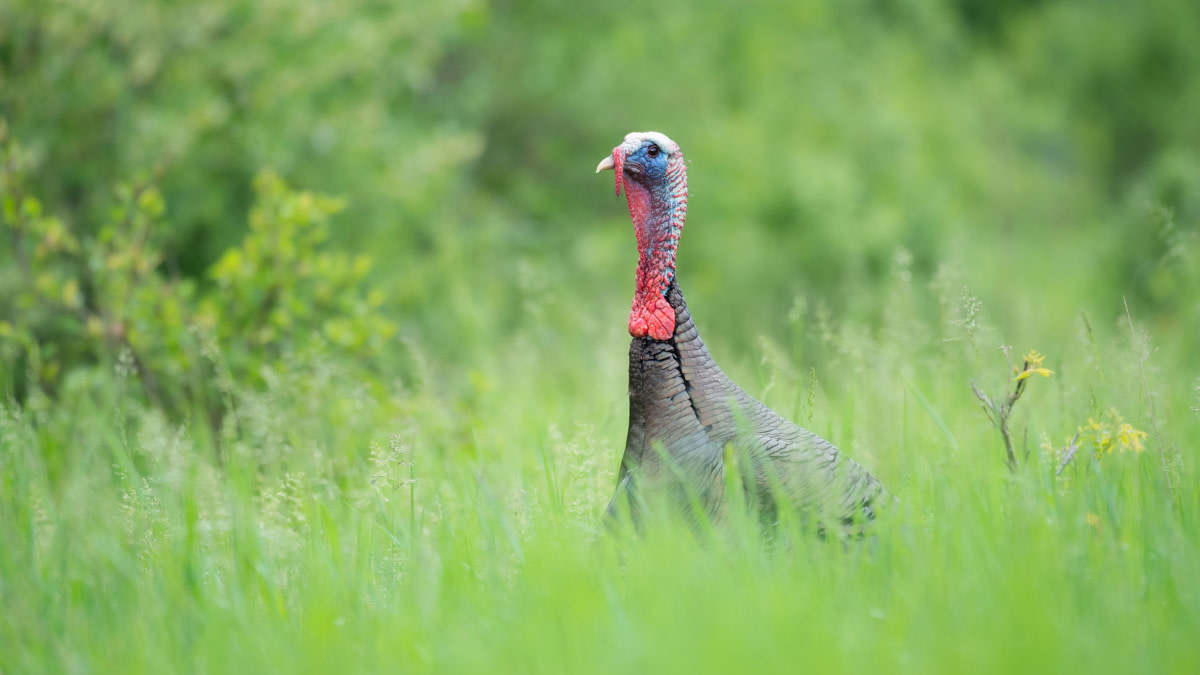
Frustrated turkey hunters often talk about the need to find unpressured birds, with optimism that these animals will be easier to pattern or deceive. On public lands, or highly pressured private ground, finding these places can be easier said than done. During your continued search for the springtime promised land, there are a few high-success scenarios to keep an eye out for. If you catch a tom in any of these situations, act quickly and capitalize while his guard is down.
Toms Roosted Alone
Instinctively, turkeys are flock animals and will roost together all spring long. However, you will occasionally find toms roosted alone, far from the flock’s preferred bedroom. This might be because the flock is establishing pecking order and the subordinate tom has been banished. Or perhaps the tom went on an afternoon journey to keep tabs on a neighboring flock and simply didn’t return to his home turf in time to make the regular roost location.
Whatever the reason, that tom will be hell-bent on reuniting with the flock, creating the perfect opportunity for you to greet him. If you have a general idea where the flock usually hangs out, position yourself between the lonesome tom and that known gathering area. In this scenario, even the wariest birds are likely to commit to your calling, even if it means coming in silently.
So solo-roosted toms aren't necessarily the dumbest birds in the woods, but they are some of the most susceptible to calls and decoys.
Toms Split Between Roosts
Much like the above situation, splitting the difference between two home trees provides hunters with numerous advantages. Turkeys are generally concentrated, vocal, easy to locate, and afford the cover of darkness in our approach to roosts. Oddly enough, I’ve found it more difficult to fool a bird off the roost than any other time of day. Fooling birds off the roost takes the perfect setup. You need to anticipate where the birds want to be and where they intend to spend their morning. If you predict their movement and place yourself in that spot, your odds will skyrocket. However, this isn’t as simple as it sounds.
One situation that can be easier to predict is created when a flock separates and roosts in two distinctly separate areas. Naturally these birds will have a strong desire to assemble, especially toms with breeding on the brain. To capitalize on this instinct, find terrain features that create the easiest route for these turkeys to convene. This funnel between roosts is your ticket to a punched tag.
This is a boom-or-bust setup. If it’s going to work, it will work within the first hour of light. If the two groups don’t assemble shortly after fly-down, they are likely going their separate ways for the morning. When that happens, it's time to look for maybe the dumbest tom of them all: midday loners.
Lone, Midday Toms
It’s not uncommon to encounter toms all alone, or occasionally in bachelor groups, between the hours of 10:00 a.m. and 2:00 p.m. During this timeframe, flocks start to disperse as they seek food or prospective nesting areas. Toms may simply lose track of their hens or intentionally strike off in search of a new flock and more receptive females. These toms have far fewer reasons to not come investigate your calls. They aren’t following a flock, competing for food, nor do they have a hen to impress.
Finding a tom in the middle of the day ranges in difficulty. Sometimes they will be extremely vocal, gobbling regularly in hopes of eliciting a response from a comrade. On the other hand, more pressured gobblers tend to be tight lipped. To locate silent birds, glassing, still hunting, locator calling, or cold calling can all be productive tactics.
This longbeard is likely to come in silently, so if you’re cold calling, be sure to allow enough time for him to creep his way into your setup. I self-impose a 30-minute wait time when cold calling in highly productive areas. The take-home message is to have confidence and remain diligent, knowing that this tom is highly deceivable. It doesn’t take a world-class turkey caller to coax this bird.
Instead of fumbling around the woods hoping to get lucky, think critically and take advantage of high success scenarios. When you find yourself in such a situation, have confidence and pay close attention to detail. A couple make-or-break opportunities with dumb toms are all it takes to turn an average season into a great one.
Feature image via Matt Hansen.





